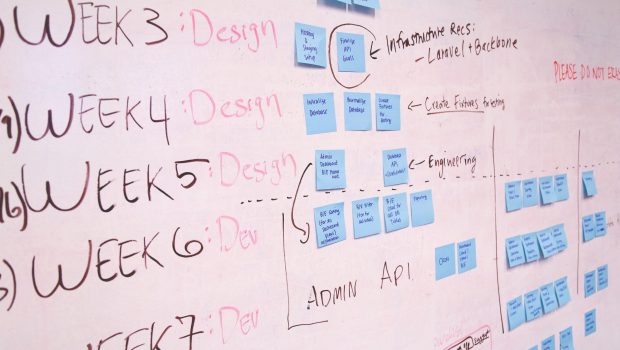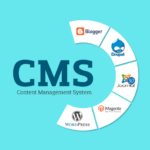An Overview of Different Stages of Mobile App Development Lifecycle
The proliferation of mobile devices into our daily lives has transformed the way we conduct business and interact with customers.
People of all ages are using apps for nearly all activities. Thus the use of mobile apps is on the rise, and it will continue to do so in the coming years. Individuals are demanding an effortless existence. And the way to that is to incorporate as much automation as possible.
Your business has to be profitable and competitive as you cater to your customer’s needs. Thus we have now become an app-driven society. Consumers worldwide are using them to be informed, entertained, and connected with everything and everyone.
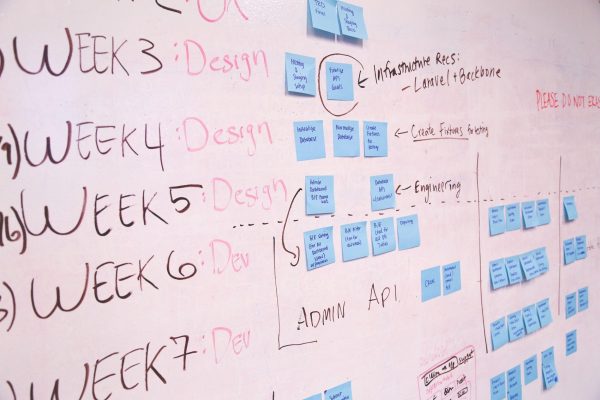
Age & Gender Distribution of Mobile App Users
Businesses all over the world are quickly embracing this ideology.
Why? You may ask. Companies must continuously strive to deliver updated and improved products that strengthen their value proposition. For starters, they can boost customer loyalty, brand image, and employee efficiency. But more importantly, mobile apps offer valuable marketing opportunities.
According to Clutch’s 2017 Survey, nearly half (42%) of small businesses had a mobile app. In fact, it’s quite common for organizations to utilize up to a dozen apps to manage the business.
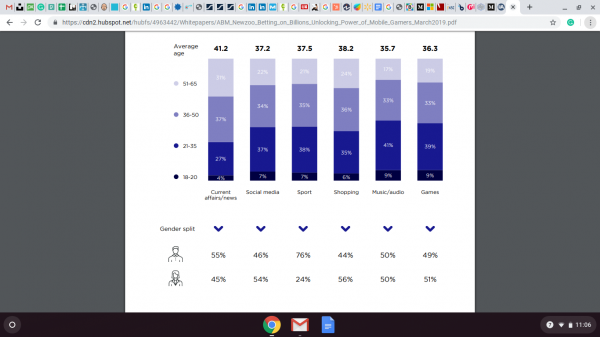
Mobile app development is necessary. Your brand will be able to embrace the future of the corporate world. Depending upon the industry that you are planning to target, explore all the definitive benefits before beginning.
Top App Categories
Companies often consider hiring a competent app development agency to manage the entire project. Even if you decide to take this route, you should have enough knowledge about the different stages that the process entails. That way, you will be able to make informed decisions during its lifecycle.

Ready to learn about mobile app development Lifecycle?
Step 1: Research and planning
The first step is crucial. This is where you lay down the necessary groundwork for the entire project. Define the need that your app will fulfill.
Research the market and acquire a detailed analysis of what your competitors are doing. More importantly, identify their shortcomings. Bank on the opportunity to fill these gaps and gaining a competitive advantage.
Highlight the following objectives in your plans:
- The reason you are developing an app
- The target audience
- What value will it bring to users and how will they use it
- The time frame for development
- The budget
- The platform on which the app will be developed
- Will it be free or paid
- Will it integrate or extend an existing infrastructure
These guidelines will help you stay on track in the next stages.
Step 2: Wireframes and storyboards
So you have a pretty good idea of what features you want to include in your app and what it will look like. Drawing detailed sketches of your envisioned product will help communicate your ideas to the entire development team. Wireframing (a visual guide that represents the skeletal framework) will help refine these aspects.
A wireframe shows:
- Page elements
- Object categories
- Content prioritization
- Possible actions
- Visual branding elements
Storyboards allow these sketches to portray the step-by-step navigation of the user through your app. It will also depict the relationship between each screen. More importantly, you will be able to see all the pieces of the puzzle fuse together into a functional app.
This is your chance to overcome any initial technical limitations concerning the backend structure. Identify additional support the app may require, such as APIs, servers, data diagram, data integration, etc.
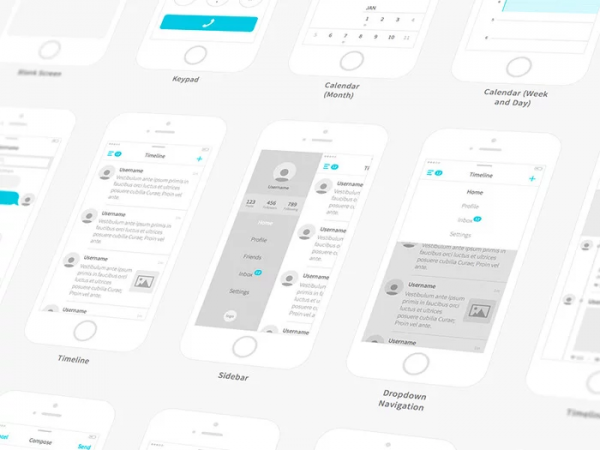
What do they show?
- Space distribution
- Content prioritization
- Available functions
- Intended actions
- Relationships between screens
Is there a difference between iOS and Android wireframing?
Not all platforms are the same. You will have to devise an independent wireframe depending upon which one you plan to launch your app on. For example, iOS uses a tab bar at the bottom of the screen, while Android uses a tab bar at the top.
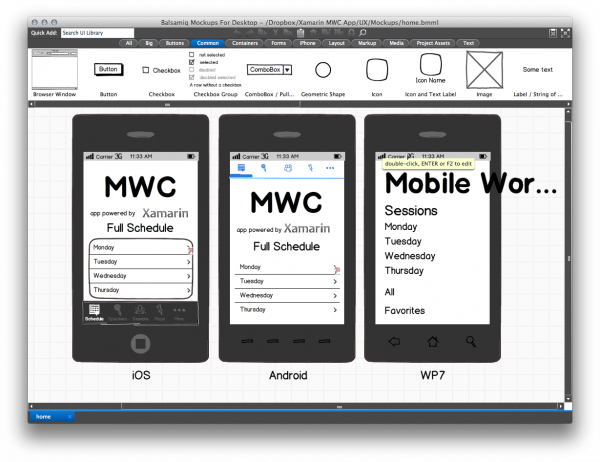
Step 3. Design and development
There is a difference in the way consumers use a mobile app and a mobile website. Remember, your app is an extension of your brand. This is your chance to incorporate features that are unique to your brand. Again, each platform has its own design language.
Visual design is a vital component. Mobile app statistics show that 21% of Millennials (age 18-34) delete an app because they do not like the way it looks.
Elements like colors, text, fonts, logos, graphics, and images are introduced and finalized after a great deal of consideration. Spending time on good UI/UX design is crucial. Both elements must be spot on and meet the target audience’s requirements.
Here are the top reasons people stop engaging with shopping apps:
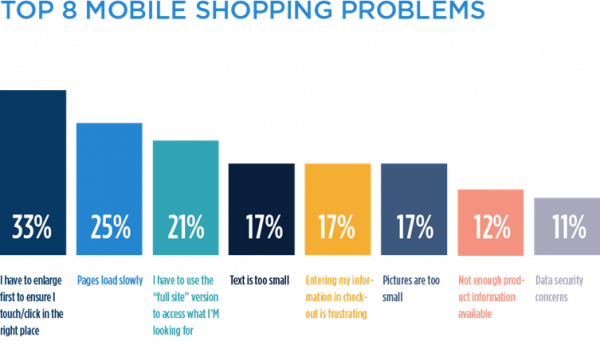
This phase will enable you to align workloads depending on available capabilities. You’ll know which tasks can be completed in-house and which ones need to be outsourced.
Step 4: App prototyping
App prototyping enables you to validate the functionality and assumptions of your app. It evaluates design ideas, collects feedback, and identifies dead links.
The best way to see how your basic app works and how smoothly navigation flows is to design an MVP. Users that physically touch and use your app will be able to experience firsthand what the app is actually offering. Gathering feedback and implementing the results will refine the final product.
Typical stages include the following:
- Prototype- An app with the core features is designed to see if the idea can get off the ground.
- Alpha- Though some bugs are still present, it is mostly code-complete.
- Beta- A mostly functional version is ready.
- Release candidate- The app has proven to be ‘stable’ where all functionalities are in order, testing is complete, and the app is free from bugs.
Stabilization should start early so that modifications can be implemented as quickly as possible. For instance, if a performance issue is detected in the initial stages, the architecture can be corrected before a significant amount of coding has been completed.
Step 5: Testing
Testing is one of the easiest ways to identify mistakes that have occurred during the coding process. While prototypes are generally available for key stakeholders, release candidate apps are often distributed to customers that sign up for early access.
It’s imperative that once you build an app, you continuously test and monitor it prior to its final release. According to a survey conducted by Compuware, 71% of users are unwilling to use unstable apps and will delete them. You cannot afford to create a bad impression of your brand.
Step 6: The Launch
Once the product is coined ‘complete’, you need to market it depending upon the platform that you have designed it for. Besides the two common ones, Google Play and the Apple App Store, mobile apps can also be stored on other platforms too.
As with any marketing strategy, in order to be effective, it’s important to direct your app to the appropriate target audience. The app should encourage the right kind of exposure to the general public. For this, you can refer to AirG spam free apps where the emphasis is given to the privacy of users along with keeping them engaged and entertained.
So even though App Store Optimization (ASO) is essential, you can also use SEO (Search Engine Optimization) to increase the number of downloads of your mobile apps. In fact, recent studies show that 27% of users discover apps while browsing search engines on their mobile phones.
Google is now focussing on the mobile version of a page for ranking and indexing policies (mobile-first indexing). Focus on the following to boost SERPs:
- Create an exceptional image about your app and rank better in web search. For instance, Bank of America and Standard Chartered promote images of a secure online banking platform.
- Provide relevant and effective service to your customers — reviews in Google My Business and Yelp matter.
- Get powerful backlinks and improve your metadata.
- Select proper keywords that describe your app and match your user’s requirements.
- Improve loading speeds, especially since Google has indicated site speed is one of the signals used by its algorithm to rank pages.
What about app monetization?
How are you going to make money if Statista reports that 94% of apps on Google Play and 88% on the App Store are free? There are several ways,
- Pay per download
- In-app purchases
- Subscriptions
- In-app advertising
These are not the only options. Developers are looking for ways to attract more consumers. However, they must understand that there is a fine line between advertising and spamming. Work alongside mobile operators and advertisers to achieve your desired goals.
The bottom line
Once you’ve launched your app, it does not mean you can sit back and relax and wait for the money to start flowing in. You will need to update it regularly so that users can acquire the best experience.
However, the best approach to a comprehensive mobile app development strategy is to leave ample room for growth. As new trends evolve, you will need to add more features. Since technology is advancing at a fast pace, you need to keep your brand viable for the future. Moreover, it must be able to incorporate future trends, one of the latest shifts being the voice-to-text feature.
And it isn’t just a matter of choice anymore. Business owners are determined to stay as close to their customers as possible. It is the only way to stand up against the increasingly stiff market competition. Now’s the time to reap the advantages through an appropriately designed app.

